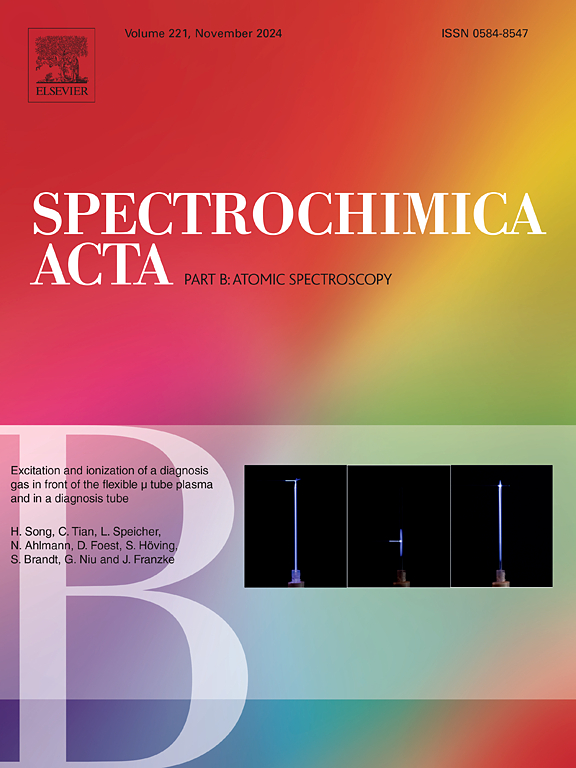Diffraction peak identification and correction in EDXRF spectroscopy
IF 3.2
2区 化学
Q1 SPECTROSCOPY
引用次数: 0
Abstract
Energy dispersive X-ray fluorescence (EDXRF) spectroscopy is an analytical technique often used to create maps of the elemental chemical composition. The fluorescence signal can be influenced by X-ray diffraction peaks, a phenomenon that can lead to difficulties or errors in interpreting spectral peaks. However, diffraction can also be useful if we successfully separate it from the fluorescence signal. In this paper, we propose different methods to deal with the diffraction peaks by using the signals obtained from a spectrometer equipped with two detectors. These methods were tested on a thin section of a rock sample to show their effectiveness in processing diffraction peaks. Each method showed its ability to deal with the diffraction peaks in a more or less effective way and each has its own limitations. The latter have to be taken into account when analyzing the EDXRF signal, whether in a geological context or in any other context.

电离辐射 X 射线荧光光谱中的衍射峰识别和校正
能量色散 X 射线荧光 (EDXRF) 光谱法是一种常用于绘制元素化学成分图的分析技术。荧光信号可能会受到 X 射线衍射峰的影响,这种现象可能会导致光谱峰解释困难或错误。不过,如果我们能成功地将衍射与荧光信号分离,衍射也是有用的。在本文中,我们提出了不同的方法,利用配备两个探测器的光谱仪获得的信号来处理衍射峰。我们在岩石样品的薄片上对这些方法进行了测试,以显示它们在处理衍射峰方面的有效性。每种方法都能或多或少地有效处理衍射峰,而且每种方法都有自己的局限性。在分析电离辐射 X 射线荧光信号时,无论是在地质方面还是在任何其他方面,都必须考虑到后者。
本文章由计算机程序翻译,如有差异,请以英文原文为准。
求助全文
约1分钟内获得全文
求助全文
来源期刊
CiteScore
6.10
自引率
12.10%
发文量
173
审稿时长
81 days
期刊介绍:
Spectrochimica Acta Part B: Atomic Spectroscopy, is intended for the rapid publication of both original work and reviews in the following fields:
Atomic Emission (AES), Atomic Absorption (AAS) and Atomic Fluorescence (AFS) spectroscopy;
Mass Spectrometry (MS) for inorganic analysis covering Spark Source (SS-MS), Inductively Coupled Plasma (ICP-MS), Glow Discharge (GD-MS), and Secondary Ion Mass Spectrometry (SIMS).
Laser induced atomic spectroscopy for inorganic analysis, including non-linear optical laser spectroscopy, covering Laser Enhanced Ionization (LEI), Laser Induced Fluorescence (LIF), Resonance Ionization Spectroscopy (RIS) and Resonance Ionization Mass Spectrometry (RIMS); Laser Induced Breakdown Spectroscopy (LIBS); Cavity Ringdown Spectroscopy (CRDS), Laser Ablation Inductively Coupled Plasma Atomic Emission Spectroscopy (LA-ICP-AES) and Laser Ablation Inductively Coupled Plasma Mass Spectrometry (LA-ICP-MS).
X-ray spectrometry, X-ray Optics and Microanalysis, including X-ray fluorescence spectrometry (XRF) and related techniques, in particular Total-reflection X-ray Fluorescence Spectrometry (TXRF), and Synchrotron Radiation-excited Total reflection XRF (SR-TXRF).
Manuscripts dealing with (i) fundamentals, (ii) methodology development, (iii)instrumentation, and (iv) applications, can be submitted for publication.

 求助内容:
求助内容: 应助结果提醒方式:
应助结果提醒方式:


